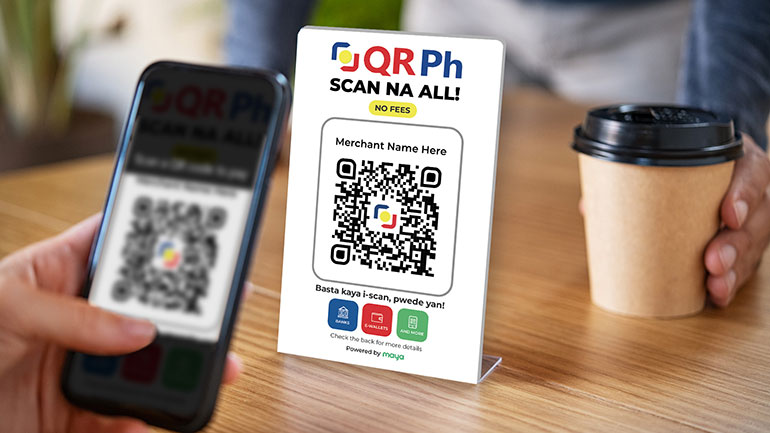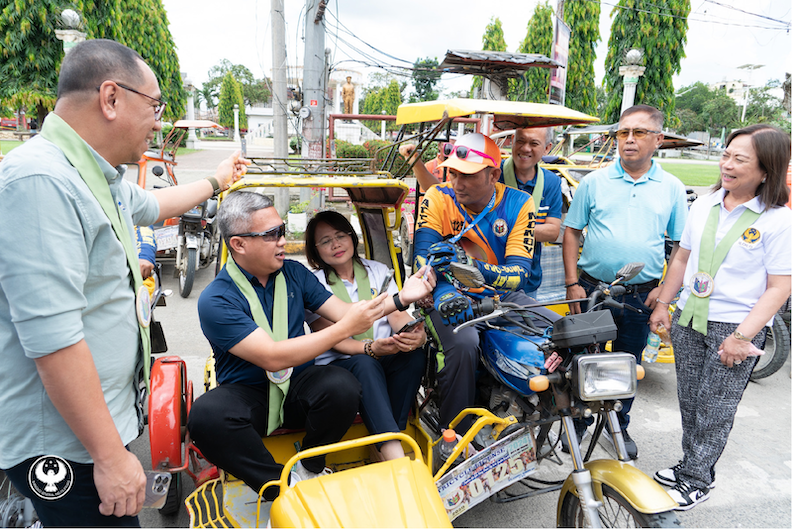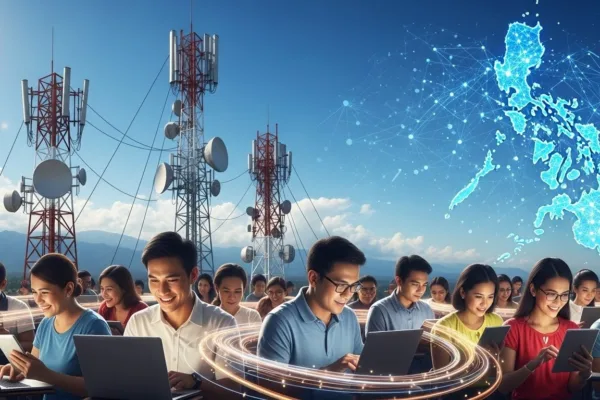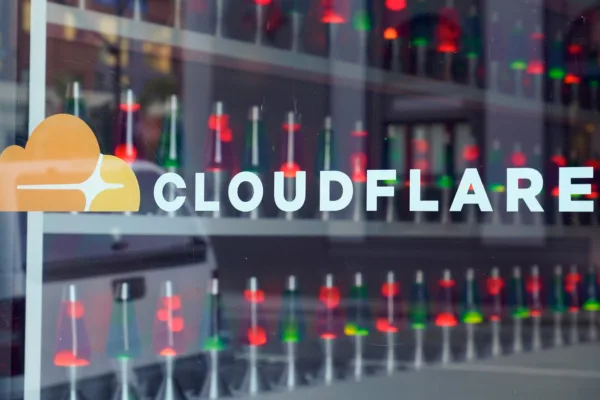by Leira Mananzan, Reporter
If you’ve ever struggled with loose change at the counter or worried about not having enough bills on hand, you’ll understand why QR Ph has become a game-changer. By 2025, the Bangko Sentral ng Pilipinas (BSP) has made QR Ph the national standard for QR payments, simplifying cashless transactions across the country. Instead of multiple QR codes from different providers, there’s now just one code that works across banks and e-wallets.
This guide serves as a QR Ph explainer for everyday users. We’ll cover how to pay using QR Ph in restaurants, shops, or even wet markets; what fees and transaction limits to expect; and how this works with popular wallets like GCash and Maya. Along the way, we’ll also share tips on avoiding unnecessary GCash fees and making the most of your e-wallets, including a quick guide to the Maya Card.

Paying for everything from your market produce to your ride home has become remarkably simpler with QR Ph, the Philippines’ national standard for QR code payments.
Launched by the Bangko Sentral ng Pilipinas (BSP), this system was introduced to unify a previously fragmented digital payment landscape where different banks and e-wallets used their own incompatible QR codes. By creating one standardized and interoperable code, the BSP made digital transactions seamless, secure, and accessible for all Filipinos.
This initiative is a cornerstone of the country’s push toward a more inclusive, “cash-light” economy, empowering everyone from small business owners to daily commuters to participate in the growing digital ecosystem.
QR Ph explainer 2025: How to pay merchants using QR Ph

Before its launch, it wasn’t unusual to see store counters cluttered with different QR codes — one for GCash, one for Maya, and maybe one for another bank.
Today, that hassle is gone, as QR Ph is designed to unify all QR-based payments. Whether you’re using a bank app like BPI or UnionBank, or wallets like GCash and Maya, you can scan the same QR code and complete a payment instantly.
For Filipinos, especially those who shop in markets or dine at small eateries, this makes going cashless practical. The interoperability of QR Ph ensures that even if the merchant uses one platform, customers can still pay from another.
Paying with QR Ph: A step by step guide

The process is almost as easy as handing over cash. You open your banking app or e-wallet, tap on “Scan to Pay,” and point your camera at the merchant’s QR Ph code.
Depending on the merchant, the total amount may appear automatically, or you may need to type it in yourself. After confirming the merchant’s name and the amount, you tap “Confirm,” and within seconds, the payment is completed.
Instead of fumbling with coins or waiting for a cashier to count change, your transaction ends with a digital receipt or an SMS notification. For busy shoppers and moms with kids in tow, this saves time and effort.
Fees and transaction limits in 2025

One of the most common concerns with digital banking is cost. By 2025, QR Ph payments to merchants will generally remain free for consumers. When you use your GCash or Maya wallet to scan a store’s QR Ph code, there are no hidden charges — the merchant shoulders any processing fees.
Where fees come into play is in person-to-person transfers. For instance, sending money to pay via GCash to another user or to a bank account usually involves a charge of around ₱10 to ₱15 per transfer. The same applies when using InstaPay from your bank app.
These charges may not seem like much, but frequent users know they add up quickly. That’s why it’s smarter to pay merchants directly through QR Ph rather than sending money to a friend who pays on your behalf.
Limits also vary by provider. Fully verified GCash users can transfer up to ₱100,000 a month, while upgraded Maya accounts often allow higher limits of up to ₱250,000. Banks, on the other hand, generally cap QR Ph transfers between ₱50,000 and ₱100,000 per day.
GCash fees: How to avoid extra charges when using QR Ph

GCash remains the go-to wallet for millions of Filipinos, but GCash fees can eat into your budget if you’re not strategic. If you’re paying a merchant, always opt to scan their QR Ph code — those transactions are free. But if you send money to someone else’s GCash wallet, especially if they use a different bank, that’s where the ₱10–₱15 fee applies.
The hack here is simple: pay merchants directly instead of routing money through friends or family. Not only does this save on fees, but it also ensures smoother tracking of your transactions.
Maya card guide: How Maya works with QR Ph
Maya integrates seamlessly with QR Ph, making payments just as smooth as GCash. However, Maya also gives users the added option of linking a physical or virtual Maya Card. This card becomes handy for establishments that haven’t fully switched to QR Ph, such as certain boutiques or service providers.
Think of it as a backup: use QR Ph whenever possible for free, instant payments, and keep your Maya Card for places that only accept traditional card payments. This flexibility is what makes Maya a favorite among younger, urban users who want both digital convenience and real-world versatility.
Everyday scenarios where QR Ph shines

QR Ph isn’t just for malls or big restaurants.
It’s now increasingly visible in small, everyday settings — from the tricycle driver to the palengke vendor selling vegetables, as well as to your neighborhood laundry shop and the café where you grab your morning latte. The ability to split bills is another advantage: in a group dinner, each friend can simply scan the same QR Ph code and pay their share directly, no cash-pooling required.
Even services like salons, spas, and fitness studios are adopting QR Ph, proving that cashless payments are no longer just a city trend but a nationwide habit.
The unified future of cashless payments
The growth of QR Ph proves that digital payments in the Philippines are maturing. With a single QR standard, payments are easier, faster, and more inclusive. More importantly, consumers now have the tools to avoid piling up on GCash fees and to maximize the flexibility of their wallets, whether through QR Ph or the Maya card guide.
This QR Ph explainer shows that the system is more than just a financial tool; it’s part of daily life. By 2025, QR Ph is shaping how Filipinos pay for everything from groceries to beauty treatments, making cashless not just a trend but a practical way of living.







